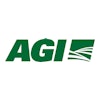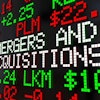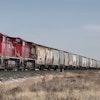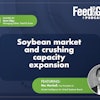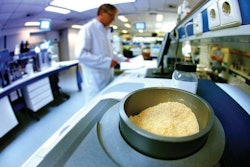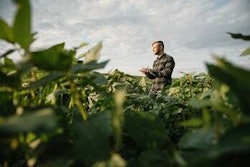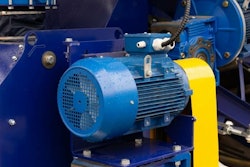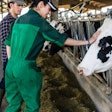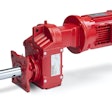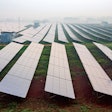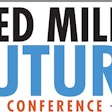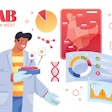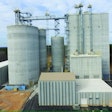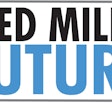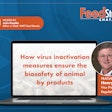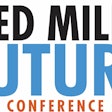Is your operation data rich, but information poor? Knobelsdorff’s Jason Grahek offers his advice for maximizing your staff’s time with new technologies.
Feed manufacturing has long suffered with staffing shortages even before the COVID-19 pandemic and its fallout. Many companies are making automation investments to offset current and future challenges. These new technology applications boast robust data collection and analysis opportunities; however, are operations utilizing that data to improve their workflows and their employees’ time and efforts?
Jason Grahek, director of business development at electrical contracting and process automation firmKnobelsdorff Enterprisesjoined the Chat to discuss how data can be leveraged to maximize your workforce.
How automation investments today will help off-set tomorrow’s labor challengesfromWATT Global MediaonVimeo.
Transcription of Feed Strategy Chat with Jason Grahek, director of business development, Knobelsdorff
Jackie Roembke, editor in chief, WATT Feed Brands/Feed Strategy:Hi, everyone. Welcome to Feed Strategy Chat. I’m your host, Jackie Roembke, editor in chief of WATT Feed Brands and Feed Strategy magazine.
This edition of Feed Strategy Chat is brought to you by WATT Global Media and FeedStrategy.com. FeedStrategy.com is your source for the latest news and leading-edge analysis of the global animal feed industry.
Today we are joined on Zoom by Jason Grahek, director of business development atKnobelsdorff, a U.S.-based electrical, engineering and renewable energy contractor. He’s here to talk about how automation investments today will help offset future labor challenges.
Hi Jason, how are you?
Jason Grahek, director of business development, Knobelsdorff:Not too bad, Jackie, good to be here.
Roembke:Excellent. We’re glad to have you. Well, let’s get right into it.Regardless of the industry, labor shortages have been a huge challenge — and that issue pre-dates the pandemic. Looking at feed production, what can feed manufacturers do to fortify their businesses against labor shortages in the future?
Grahek:Although it’s a challenging time in the labor market — and we’ve been ramping up for the challenges along the way — it is a very exciting time. From my perspective, the combination of current technologies and to be able to apply those, I think automation is a way to alleviate a lot of these issues by leveraging the technologies that you have at your facilities today.
Roembke: For feed manufacturers considering or looking to invest in new technologies — such as automation, sensors — what’s the first step and what should they take into consideration when beginning that journey?
Grahek:I think the first step to me is always have a long-term plan. Now, some of those plans might adjust over time, but it gives you something to be working toward along the way — so that you’re eating that elephant one bite at a time and stepping towards your ultimate goals in the future. And I think a good place to start, is in what I call the “sneakernet.”
思考你的设施,您可以在leverage automation to remove running around the facility in your sneakers with clipboards, and leverage that automation platform to be able to acquire that data, log that data and tie it into your business systems to eliminate those clipboards and running it around the facility. They allow you to run your facility rather than just run around. And through that, a lot of technologies today can future-proof your automation with industrial networks, e.g. industrial Ethernet networks, that can be deployed and allow you to really future-proof your automation investment and allow you to step forward along the way, as well as a lot of sensor technology that can be applied in today’s market.
Roembke: And please provide some examples of how the data that is collected can be used to anticipate labor needs to add to the profitability of the business.
Grahek:A lot of what we’re seeing is really the digitization of the process and being able to connect to your ERP or MES applications and transfer that data to anticipate your production schedules and your labor requirements — as well as manage raw materials by looking at your production [system] and making sure that you’re not going to be cut short on any raw materials. But by leveraging sensor technology, it allows you to monitor and make sure you’re not out of spec with your production — or even trending towards out of spec — so that you have that early indication.
You can be agile and adjust to avoid any scrap material or unnecessary downtime.
Roembke: So let’s say collecting the data is the easy part. How do you take that information and interpret it — and whose job should that be?
Grahek:I think you’re spot on. And that’s a great point: collecting the data is easy with the advancements of data collection that we have. It’s very easy to collect that data and a lot of times what you’ll run into are facilities that I call data rich and information poor. The trick really is taking that data and turning it into knowledge. What we’ve been hearing about for many years is the knowledge worker.
So the art, from my perspective, is develop a data model so that you can log the proper data, but then focus on the visualization. And really the way in which these knowledge workers wherever they are — whether they’re in the front office or on the line — get them the data that they need to do their job and display that data in a fashion that works for them. And with a lot of the technologies, it’s pretty exciting what you can do with that data, to turn that data into knowledge, and streamline the process with various slicers that allow you to really dig into the data and see it in different visualizations.
That it really adds context to the data, and ultimately towards knowledge for those operators or whatever role they’re in to be agile and adjust along the way to maximize throughput and efficiencies.
Roembke: And once these important data points have been packaged and are ready for review, how should that data be taken to add value to the operation?
Grahek:Get it as visible as early as possible for those knowledge workers. We hear about dashboards and getting that in front of them — and it could be automatic notifications as well — but allow them to see that as close to real time as possible.
One of the primary objectives is to get that information in front of them to allow them to adjust along the way. So really get it as as quickly in front of them as possible for them to adjust in and affect the outcome.
Roembke:Very good. Well, thank you so much. If you’d like more information for future proofing your feed operation, please subscribe to the Feed Mill of the Future monthly digital supplement. That information can be found atwww.feedstrategy.comorm.fotoarslan.com.
Thank you so much, Jason, and thanks to you for tuning in.
Grahek:Thank you.
Announcing the Feed Mill of the Future digital supplement
WATT’s feed brands Feed Strategy and Feed & Grain magazines join forces to launch the monthly Feed Mill of the Future digital supplement. Each edition aims to provide animal feed industry stakeholders with forward-looking content, market insights and a spotlight on the leading-edge technologies shaping the global feed industry of tomorrow.
Subscribe today!https://bit.ly/3dWzow7

